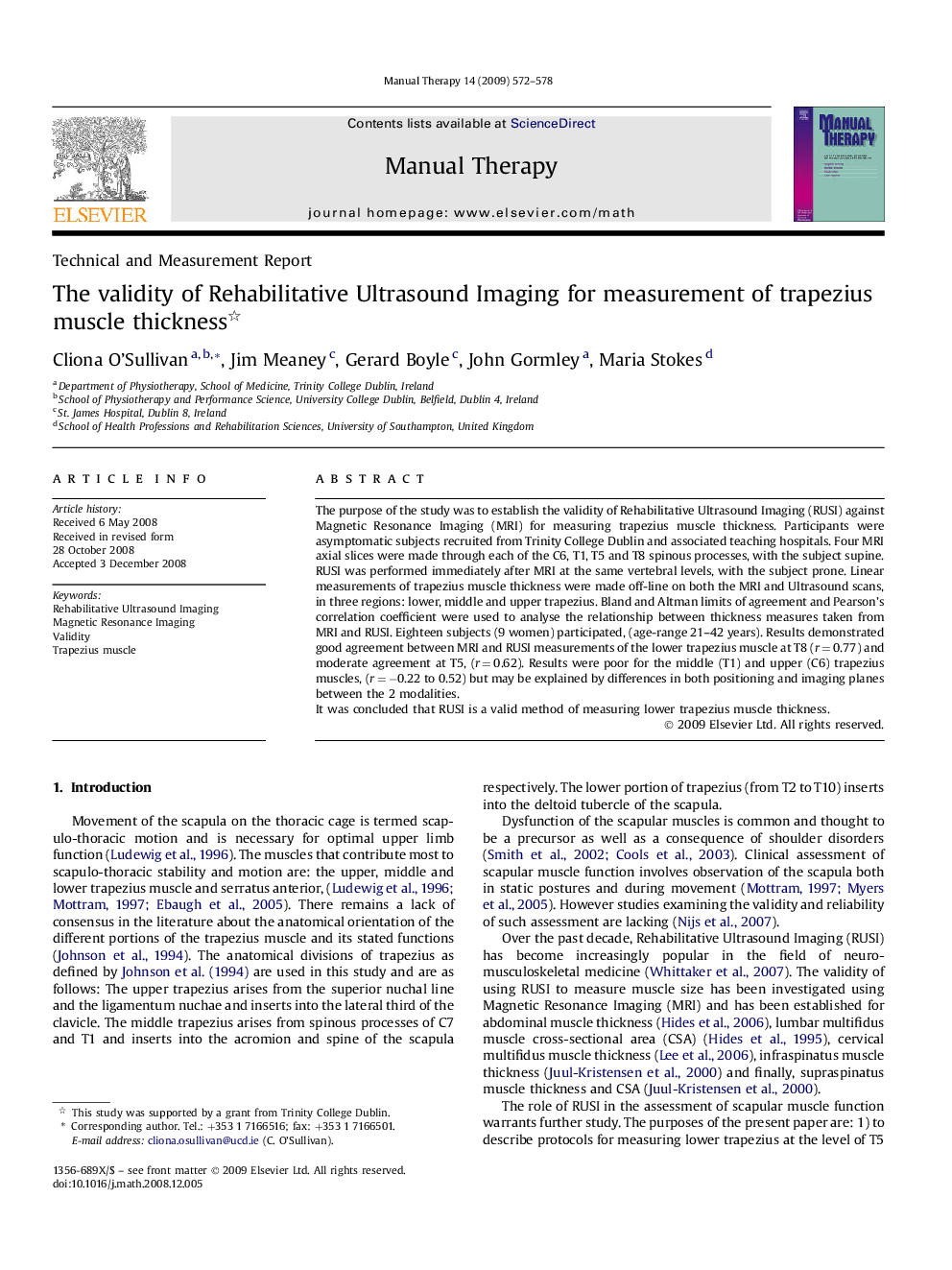| Article ID | Journal | Published Year | Pages | File Type |
|---|---|---|---|---|
| 2625524 | Manual Therapy | 2009 | 7 Pages |
The purpose of the study was to establish the validity of Rehabilitative Ultrasound Imaging (RUSI) against Magnetic Resonance Imaging (MRI) for measuring trapezius muscle thickness. Participants were asymptomatic subjects recruited from Trinity College Dublin and associated teaching hospitals. Four MRI axial slices were made through each of the C6, T1, T5 and T8 spinous processes, with the subject supine. RUSI was performed immediately after MRI at the same vertebral levels, with the subject prone. Linear measurements of trapezius muscle thickness were made off-line on both the MRI and Ultrasound scans, in three regions: lower, middle and upper trapezius. Bland and Altman limits of agreement and Pearson's correlation coefficient were used to analyse the relationship between thickness measures taken from MRI and RUSI. Eighteen subjects (9 women) participated, (age-range 21–42 years). Results demonstrated good agreement between MRI and RUSI measurements of the lower trapezius muscle at T8 (r = 0.77) and moderate agreement at T5, (r = 0.62). Results were poor for the middle (T1) and upper (C6) trapezius muscles, (r = −0.22 to 0.52) but may be explained by differences in both positioning and imaging planes between the 2 modalities.It was concluded that RUSI is a valid method of measuring lower trapezius muscle thickness.
